Cobourg Peninsula Fishing
Posted on 15 October, 2014 in Cobourg, FishingBarra, pelagics, reef fish... this place has the lot!
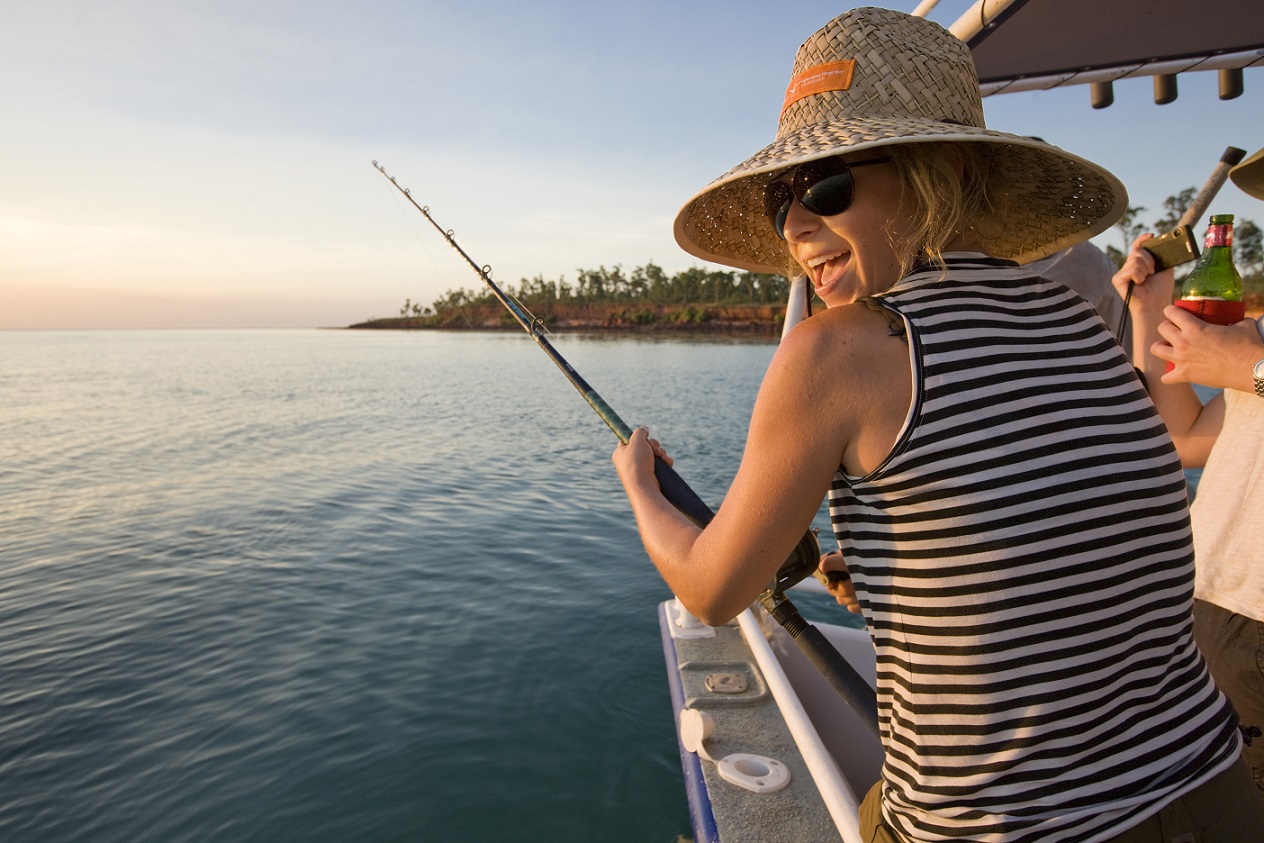
Heralded as one of the best fishing destinations in Australia, the remote Cobourg Peninsula is one of Australia’s true wilderness areas. The terrestrial and marine park is jointly managed by the Aboriginal landowners and Parks and Wildlife to ensure its ongoing preservation. Limited numbers of people are allowed into the park at any one time, permits must be obtained from Parks and Wildlife prior to visiting and it’s advisable to apply early as there is a twenty car limit in the Park.
The Cobourg Peninsula offers both great land based fishing as well as boating opportunities. The region is lined by sandy bays, mudflat inlets, mangrove lined creeks, rocky headlands as well as extensive shallow and deep coral reefs.
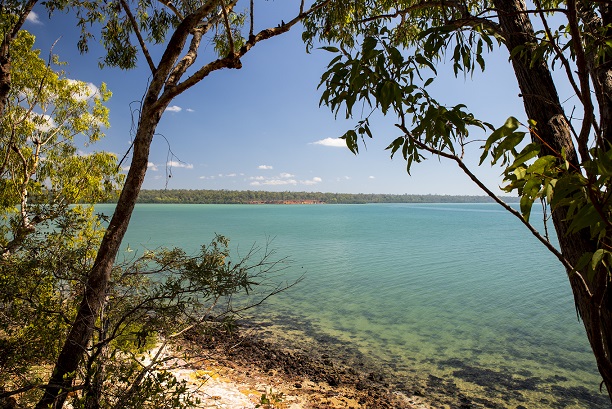
At Black Point (near the ranger station) there is a public boat ramp allowing access to Port Essington at basically any tide except for the extreme lows. Trepang Bay, Bremer Bay and Raffles Bay all offer excellent fishing opportunities although Port Essington and its surrounding offshore reefs are by far the most popular.
Cobourg Fishing Safaris (operated by Venture North) are presently the only accommodated fishing charter operator situated on the peninsula as the Cobourg Beach Huts, Cape Don Fishing Lodge and Seven Spirit Bay have all closed. Cobourg Fishing Safaris offer fly in/fly out fishing charters from April to November based out of Venture North's coastal camp.
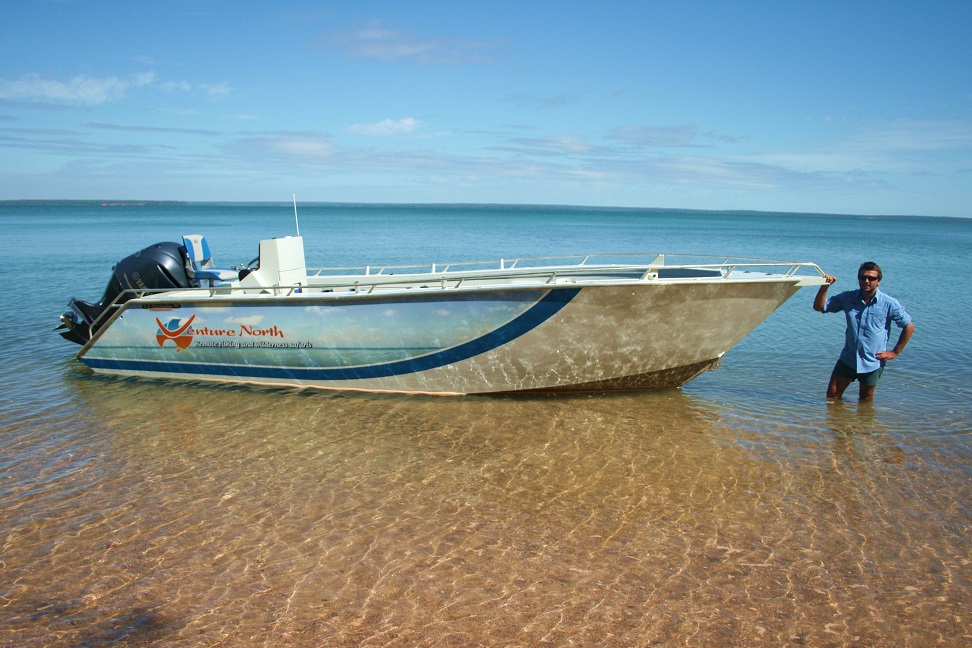
April, May, October and November are the best times for fishing as the water temperatures and clarity are ideal for chasing both barra and pelagics. These months often deliver glass mornings with a late afternoon north-westerly breeze. The tides within the bays only vary between 1-2m although given that the bays are generally shallow you still need to keep in mind where you want to fish and what tides will work.
Blue water fishing action is what attracts most keen anglers to Cobourg.
The waters hold an abundance of large giant trevally, golden trevally, Spanish mackerel, queen fish and long tail tuna. Pelagic fishing is generally better when there is low-medium tidal flow and decent water clarity (the dry season winds will determine both factors). GT’s, mackies and queenies are often found around the rocky outcrops and sandy drop-offs on the start to mid incoming tides. Troll the shallow rocky outcrops with 1-3m hard bodies that can withstand a good 5km trolling speed. With your deeper outcrops and contour lines that are holding bait, drop marabou jigs and chromies right down to the bottom and retrieve in a jigging motion (remember: you can never reel too quick for these fish, especially in clear water).
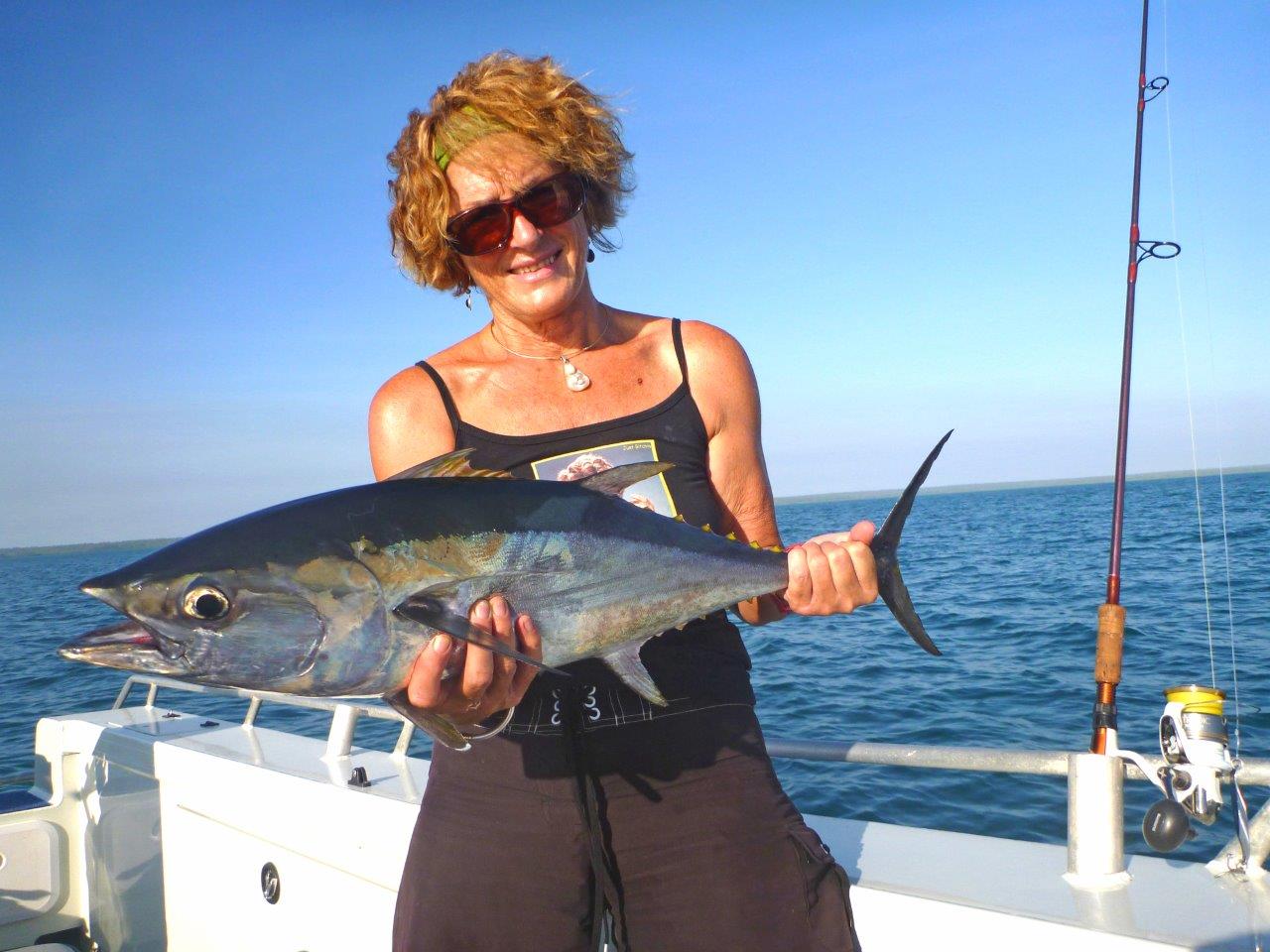
Golden Trevally can be found along the sandy flats of all bays. Sharks, stingrays and manta rays are frequently seen throughout the whole of Cobourg. Cobia, golden trevally and queenies will often be following close by cleaning up their mess. It’s always worth having one or two flicks just behind the shark or ray and you’ll be surprised with what turns up.
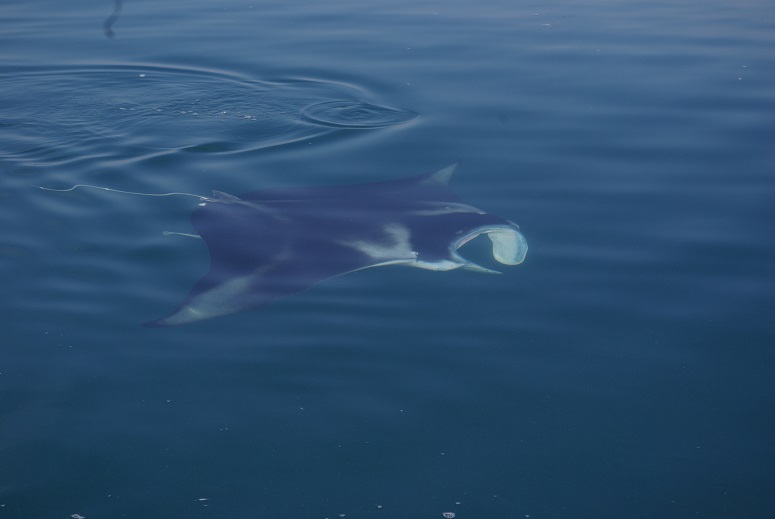
In the build-up and late wet you’ll find your big mackies and tuna out wider towards Orontes Reef whereas in the dry they will tend to head further in the bay following the currents/contours. Keep a sharp eye out for bait balls and working birds. Work out which direction the birds/bait are heading and always keep in front, turning the motor off when possible and flicking white soft plastics, chromies and small poppers into the action. If you’re not getting any hits try scaling down in lure size and make sure to cover each water column from the bottom to the surface.
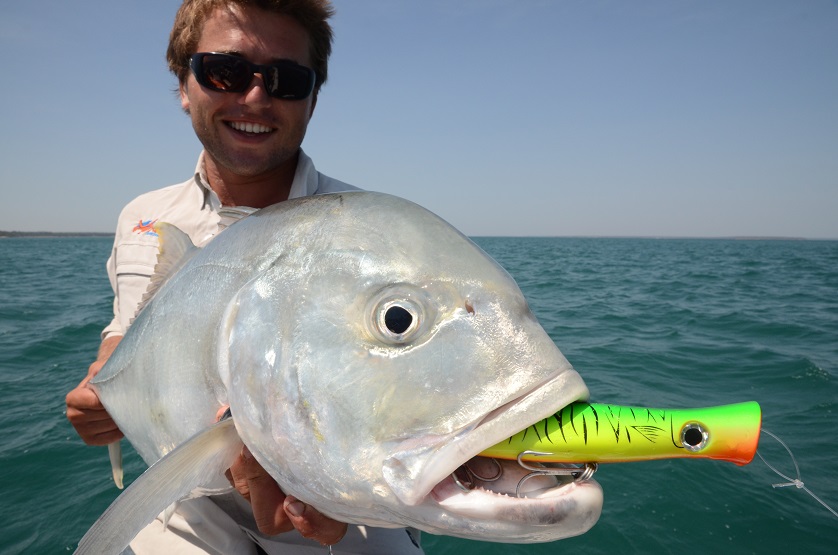
Rocky pinnacles and coral reefs will all hold good numbers of coral trout, golden snapper, rock cod, stripy snapper and tricky snapper. The start of the outgoing and end of the incoming tides work best at the inner bay reefs while all changes of tide are good out wide as long as there’s flow. A week before the full moon and a week before the new moon are the best times to target your reef species. These tides provide medium tidal flow which allows effective drift fishing whether sinking baits or plastics along the bottom. Live mullet as well as white or green/red soft plastics work best on the coral areas. Make sure your bait and lures are always within 2m from the bottom of the seabed.
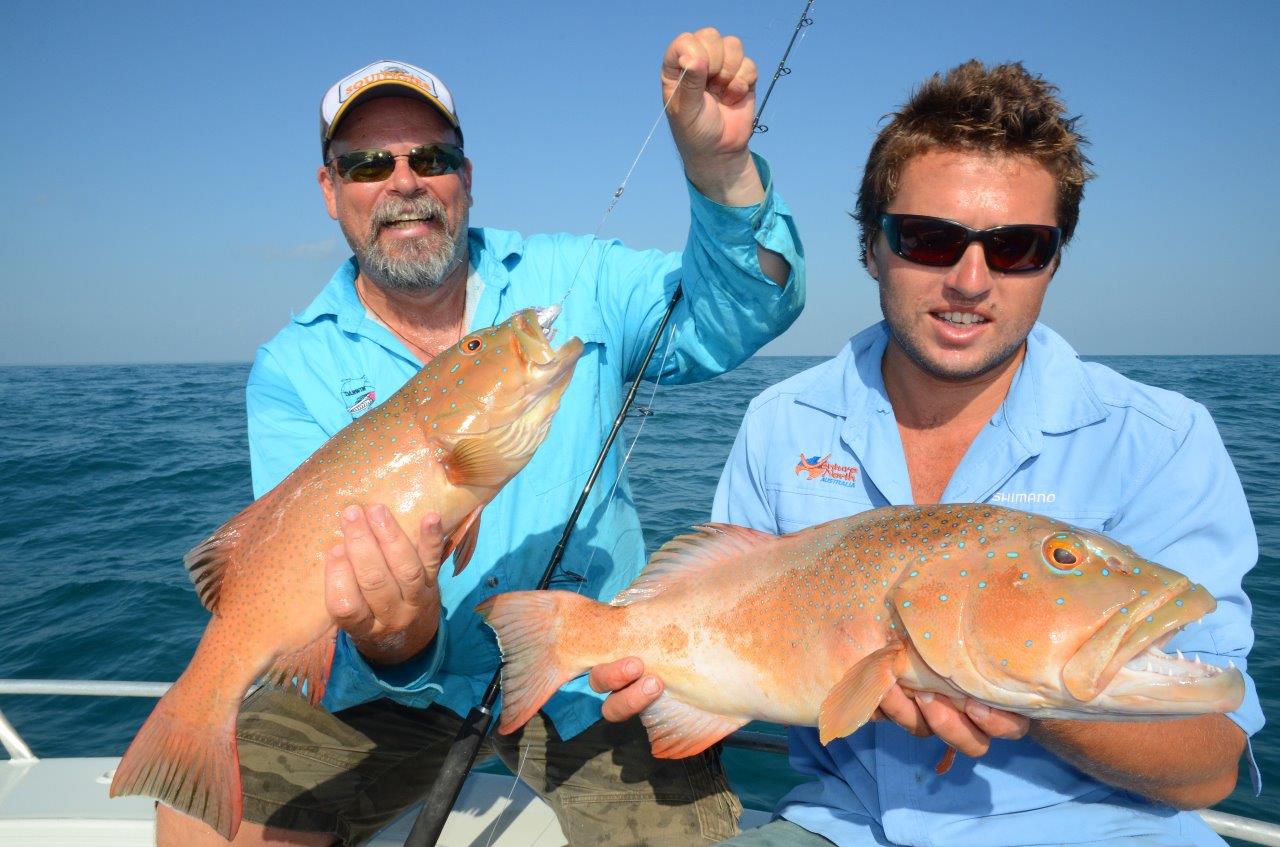
If you find a drop off on the sounder that’s over 4m and you’re in at least 6m of water then you’re always in with a chance of catching a Jew fish. Jew fish basically only come in one size in these waters and that’s big! Make sure to try both the top and bottom of any ledges with 1-2oz jig heads matched with anything imitating a squid or mullet. Use heavy mono (100lb is good).
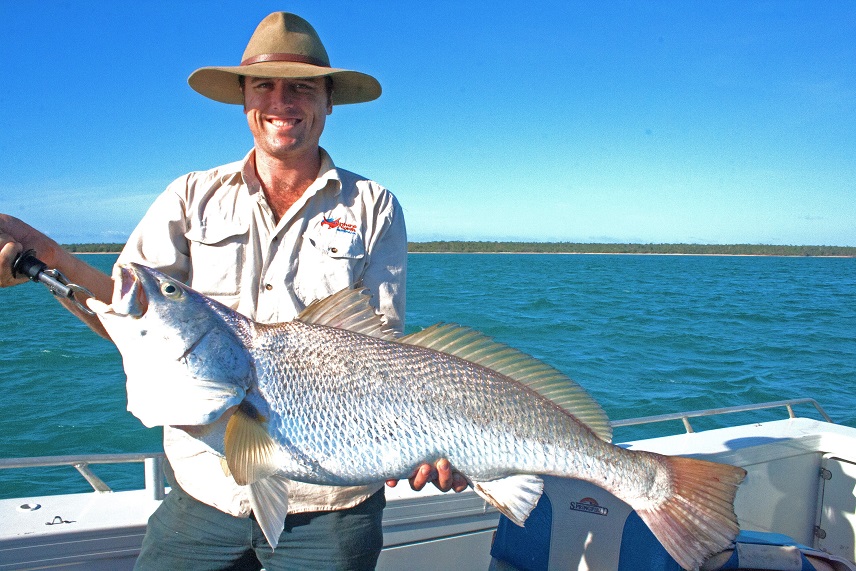
Mangrove lined creeks and gutters towards the south of Trepang Bay and Port Essington offer productive barramundi and mangrove jack fishing throughout the year. All creek entrances are extremely shallow so you either want to be pushing into the creeks and gutters as soon as the tide permits otherwise lock yourself in. When doing a lock in you have plenty of time to become creative so make sure to fish the usual haunts (small flats gutters, eddies, snags etc.) with a range of lures. On an outgoing tide barra will stay on the flats around the mangrove fringes and feeder creeks as long as possible so keep an eye out. Small lures such as golden bombers and lightly jigged 5” pale/grey plastics work well as they don’t seem to spook the fish quite as easily. Don’t forget to cast at least 2m behind and in front of a moving barra so you can basically perform a drive by in front of their face. The dirtier the water the slower the retrieve.
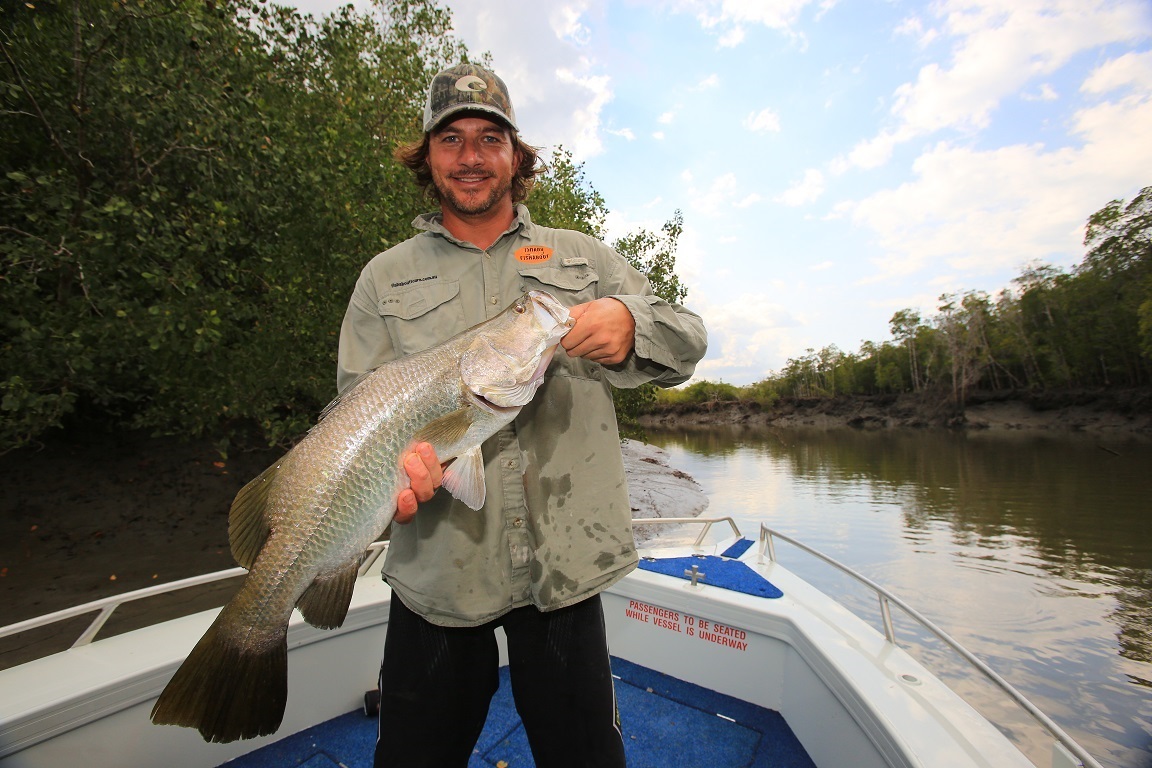
Look for any structure in the water, especially when it’s on a bend and in deeper water. These will nearly always be holding either mangrove jack, golden snapper, mangrove cod, Queensland groper or barra. Make sure to get a soft plastic right amongst the structure so you can actually feel the lure tapping its way around the woodwork or rocks. If you’re not getting the odd snag then you’re not in the zone, be prepared to loose a few rigs. On the start of the incoming head to the mouth of the creeks and keep an eye out for threadfin salmon and barra on patrol. If these tides coincide with sundown then you should be on, dirty water won’t be a problem just pick a brighter lure and try fizzers.
Lets not forget either- there’s another 255 species of fish in the marine park that I haven’t mentioned so always expect the unexpected.
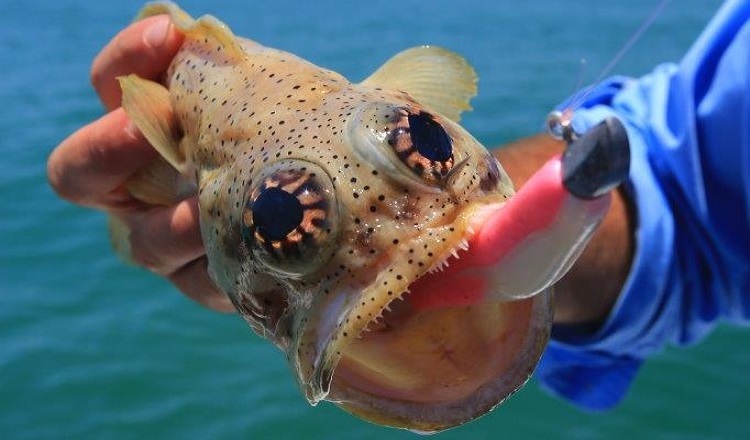
And to wrap up my Cobourg tackle box always includes:
- 6” squid vicious gulps (nuclear chicken)
- 5”-6” jerk shad gulps (smelt and white)
- 5” squidgy shads (white lightning and green)
- 30g & 50g chromies
- ½oz and 1oz marabou jigs
- 80-135 Halco rooster poppers (pilchard and red neck)
- 120-160 Halco Laser Pro (white redhead and stripey)
- Large Riedy B52 with gold or green tones
- Tilsan barra (Red herring)
- Golden bomber
- Fizzers
- 10g-20g squid jig (pink)
- 1/4oz, 3/8oz, 1oz and 2oz jig heads
- 50lb and 80lb mono
- 80lb wire trace with crimps
This article was written by Hugh Gange. Hugh has been fishing the Cobourg Peninsula for the past 8 years and is the owner/operator of Cobourg Fishing Safaris.
© 2014 Venture North | ABN: 34 142 533 113 | Privacy Policy | Terms & Conditions
Darwin Web Design by Dash Media


